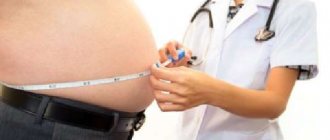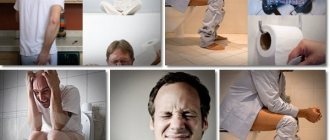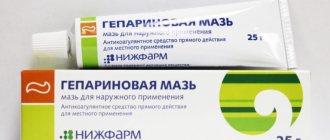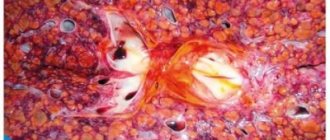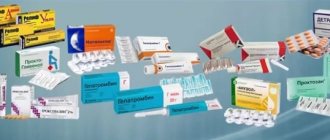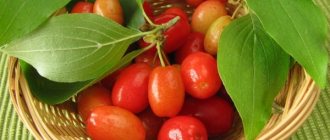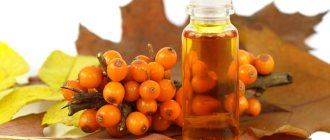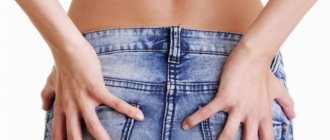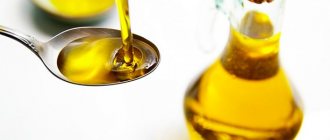Traditional medicine to help
It is possible to treat hemorrhoids at home, or rather to help treat the disease, using traditional medicine methods. Various decoctions and infusions of herbal ointments will help. Below are a number of the most effective remedies in the fight against the initial stage of hemorrhoids.
St. John's wort decoction. Pour 30 g of crushed herb leaves into a glass of water, boil over low heat for 10 minutes, and leave for a couple of hours. Then strain and drink a third of a glass before the meal. The decoction reduces inflammation and disinfects.
Bath with infusion of birch leaves. Place the main component in the amount of 10 handfuls in boiling water (5 l), leave for 15 minutes with the lid closed. Let it cool and pour it into a pre-prepared bath. You can lie in such a bath for a quarter of an hour and resort to the procedure every other day. Birch leaves will reduce inflammation and stop bleeding.
Propolis candles. Soften several Vaseline suppositories in a water bath, add 20 g of propolis extract. Mix the mixture thoroughly and form candles, which we wrap one at a time in parchment and leave in a cool place until use. We use the product at night, one suppository for 10 days. Propolis relieves pain and kills germs.
Shilajit-based ointment. Mix the main component with peach oil or honey in a ratio of 1:1 or 1:3, respectively. In order to prepare candles from mumiyo, mix natural resin with honey in a ratio of 1:3, add starch (flour). From the resulting composition we form candles. The product relieves inflammation and heals.
It is important to know! Alternative treatment for hemorrhoids, which are in the initial stages of their development, must be agreed upon with a doctor. .
How is the treatment carried out?
Hemorrhoids of the 1st degree are usually treated with conservative methods, but if they do not bring the expected result, then minimally invasive methods are prescribed.
Drug therapy
Modern medicine boasts a number of medications that relieve hemorrhoids and treat their manifestations:
- Aspirin and trental will help improve blood properties and reduce the risk of thrombosis of nodes, prevent inflammation;
- Common medications for oral treatment (tablets and capsules) are phlebodia, detralex, and aescusan. These are effective venotonics that improve the tone of the venous walls and prevent the formation of new nodes;
- For pain relief in the treatment of hemorrhoids, it is permissible to take analgesics (except during pregnancy and lactation). Ibuprofen, diclofenac, movalis will help relieve pain, but you should not overuse painkillers, they only relieve pain and are not a full-fledged treatment.
- For severe bleeding, the drugs etamsylate and vikasol are recommended. Bleeding from hemorrhoids is a dangerous condition, as it can lead to anemia with loss of consciousness.
- If you are prone to constipation, you will need to take medications to normalize your stool. Frequent constipation at stage 1 of the disease threatens the transition to the next stage, and even the development of chronic hemorrhoids.
At the beginning of the disease, it is better to use topical drugs. They will bring good results during the treatment of the problem area, with minimal systemic effects on other organs.
Drug treatment has the following goals:
- prevention of potential complications is carried out;
- pain is relieved, as well as itching and discomfort around the anus;
- the period of remission increases in the presence of chronic hemorrhoids;
- The body is being prepared for surgery, if necessary.
Physiotherapeutic procedures
Physiotherapy has proven itself well in the treatment of grade 1 hemorrhoids:
- The sclerotherapy method consists of injecting a chemical compound intended for this purpose into deformed veins. The drug glues the walls together, and hemorrhoids do not develop further. The method is optimal for treating the disease at an early stage, when it has not yet become chronic.
- It is often proposed to treat early hemorrhoids using the method of electrocoagulation, that is, electric current. The impact occurs precisely on the leg of the node, the blood flow to it is interrupted and the node disappears.
What are the stages of hemorrhoids?
Stage 1 hemorrhoids photo
The initial stage of the disease is extremely rarely noticed by the patient. Many people simply ignore minor symptoms that appear in the first stage or find a plausible explanation for them. Characteristic symptoms of stage I hemorrhoids are:
- regular constipation;
- a feeling of some discomfort that occurs after defecation;
- mild itching, slight burning in the anus;
- a periodically appearing specific sensation, which is described as a slight wetness, phlegm in the anus.
For stage I of the disease, the appearance of pain is uncharacteristic. There is no bleeding, although a small amount of blood periodically appears in the stool.
The initial stage of internal hemorrhoids is almost asymptomatic. Only occasionally does mild itching, which occurs after bowel movement, make itself felt. There is no bloody discharge during this period.
Stage II photo and description
Stage II of the disease is characterized by prolapse of hemorrhoids, which at this stage can still be carefully adjusted on your own.
If hemorrhoids are external, the enlarged, often inflamed nodes can be easily felt with your fingers. A proctologist can make an accurate diagnosis based only on visual examination data.
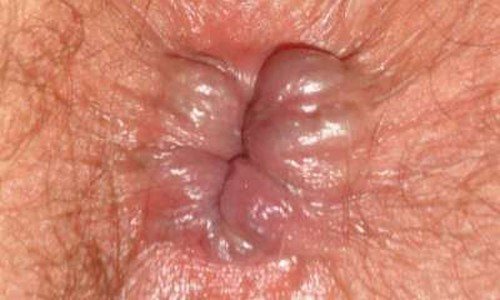
Another symptom typical of this stage is the appearance of blood. If at the initial stage blood appeared occasionally and only on paper, now traces of it are found on pajama pants or a sheet. Bleeding begins not only when the patient actively moves or lifts something heavy, but also after a night's sleep, at rest. Added to this symptom is the feeling of the presence of some foreign object in the rectal area, the patient complains that something is bothering him. The pain gets worse at this stage.
At stage II of the disease, the sensations of itching and burning intensify, and the process of bowel movement is accompanied by quite severe pain. Trying to avoid this, patients hold back and try to endure the urge to defecate, which only worsens the situation: the feces become compacted, harden, and when it becomes impossible to tolerate, they seriously injure the walls of the rectum. This leads to the appearance of cracks and wounds.
Despite these symptoms, it can still be difficult to identify internal hemorrhoids: hemorrhoids in the anus are still small enough for a proctologist to feel them.
Symptoms of advanced hemorrhoids
Despite the fact that many signs of advanced hemorrhoids in themselves are cause for concern and require medical consultation, people often go to the hospital as a last resort. Many patients, having discovered hemorrhoids, try to use folk remedies or pharmaceutical drugs ineptly and irregularly. At the first signs of improvement, all procedures are stopped, after which the disease progresses without obvious signs. To eliminate such risks, you should know exactly what symptoms you need to sound the alarm about.
How do hemorrhoids manifest?
- The anus area is inflamed and painful. Burning and discomfort are observed constantly.
- The venous nodes are very prominent and can fall out of the anus during simple movements or defecation.
- Bleeding of varying intensity that occurs after eating spicy food, defecation or physical activity.
- The skin around the anus may fester, sepsis develops and the temperature rises.
- Due to constant blood loss, anemia, general weakness and decreased immunity develop.
- Other intestinal diseases may occur: polyps, fistulas and even tumors.
Advanced hemorrhoids are characterized by an intensification of all symptoms, an increase in pain, especially during movements and during bowel movements. It is no longer so easy to ignore, so a trip to the doctor is inevitable. To know what to prepare for, it is better to study information about effective treatments in advance.
Prevention of hemorrhoids
As you know, prevention is the best way to treat any disease. Hemorrhoids are no exception, and following simple rules of prevention will help, if not avoid this disease completely, then minimize the risks.
So, we follow these rules:
- Avoid constipation and diarrhea (both contribute to the development of hemorrhoids). To do this, you should balance your diet and include fermented milk products and plant-based fiber. We try to reduce the number of simple carbohydrates, as well as meat and spices;
- We take a bath as often as possible, since taking a bath normalizes blood microcirculation processes and also helps keep the anal area clean, which is extremely important for the prevention of hemorrhoids;
- We maintain personal hygiene. Toilet paper alone is not enough. After defecation, it is best to simply wash yourself;
- When defecating, we try to push as little as possible. It is at this point that problems with hemorrhoids arise;
- We avoid hypothermia in any form, since this disrupts blood microcirculation and causes problems with blood vessels in the anal area;
- We try to spend as little time as possible in a sitting position;
- We avoid alcohol, even in small doses. We completely exclude beer and other low-alcohol drinks, which also cause disturbances in blood circulation and lead to congestion in the pelvic area;
- At the first suspicion of hemorrhoids, you should immediately consult a doctor.
It should be remembered that hemorrhoids today can be treated at any stage and you should not “tolerate” them.
Symptoms
Stages 3 and 4 hemorrhoids are manifested by serious symptoms that cannot be ignored.
Signs of a severe pathological process are reflected:
Acute disease
- constant unbearable pain, which worsens due to physical activity, sitting position;
- a noticeable increase in the size of the inflamed bumps;
- pain of nodes, external localization;
- painful bowel movements accompanied by massive blood loss;
- discharge of pus from the anorectal canal;
- unpleasant burning sensation in the anus;
- gas incontinence, often with the release of feces.
If complex therapy is not applied in a timely manner, the pathology can become complicated by serious illnesses. The fourth stage of hemorrhoidal disease is dangerous due to thrombosis of the anorectal veins and pinched cones. If a patient is diagnosed with severe hemorrhoids, the patient is prescribed surgical assistance to eliminate the thrombosed nodes. Another serious complication is infection with suppuration in the capsule of the rectum, which threatens sepsis. Stages 3 and 4 hemorrhoids can only be treated surgically.
Treatment of the initial stage at home
Where to start treating stage 1 of the disease at home? Treatment of stage 1 should be comprehensive. Non-drug methods for treating hemorrhoids at the initial stage include:
- moderate physical activity;
- weight loss;
- prevention and control of constipation;
- refusal to drink alcohol;
- sitz baths;
- herbal medicine.

Daily physical activity for hemorrhoids includes simple but effective exercises. The purpose of these exercises is to eliminate blood stagnation in the pelvis and portal vein system, and increase the tone of the perineal muscles. Exercises for hemorrhoids are performed during the period of remission, preferably after morning bowel movements. The most effective exercises are considered to be in a supine position (such as “bicycle”, “scissors”, “birch tree”) or sitting on the floor (walking on the buttocks).
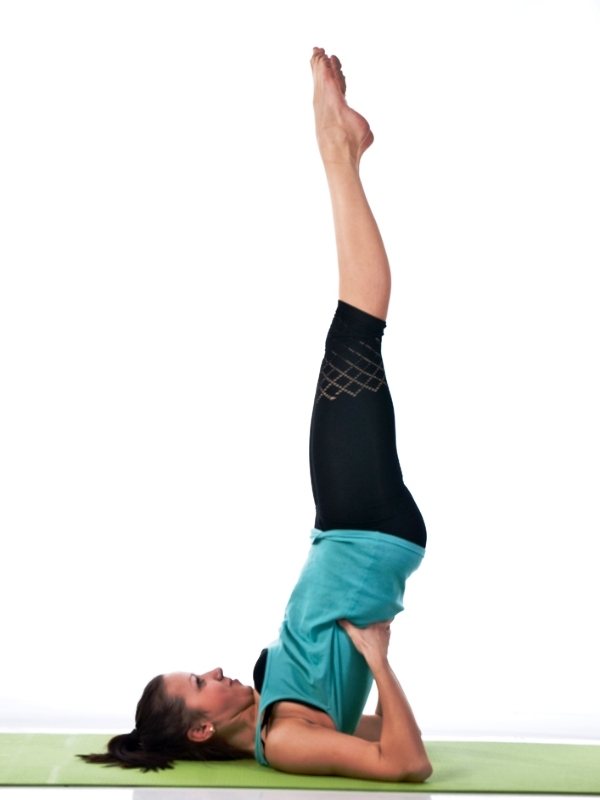
Exercise is an effective way to prevent hemorrhoids
Normalization of stool can lead to regression of the disease at the initial stage. In order to combat constipation, it is necessary to consume a sufficient amount of clean water per day (at least 2-2.5 liters), enrich your diet with plant fiber (vegetables, fruits, herbs) and unsaturated fatty acids (nuts, vegetable oils, fatty types of sea fish ). Limiting caloric intake, split meals and the “right” foods help not only normalize stools, but also get rid of excess weight.
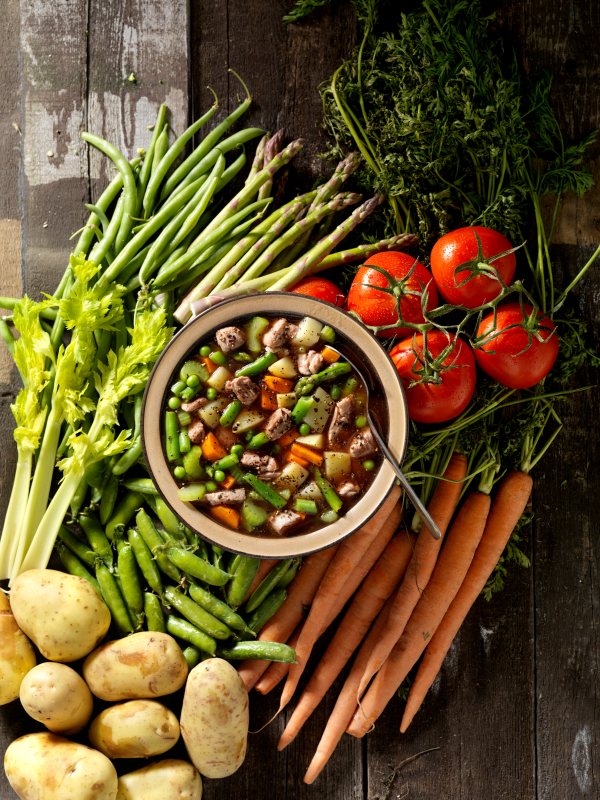
When treating hemorrhoids, it is necessary to give preference to plant-based, low-fat foods.
Alcohol provokes the occurrence and exacerbation of hemorrhoids, so stopping its use or reducing the doses taken to a minimum contributes to the recovery of patients with hemorrhoids. Sitz baths help with varicose veins of the rectum well at home. Sitz baths are best done before bed, because after them you need to lie down for a while in a relaxed state. The procedure itself looks like this: water at a temperature of 40-42°C is filled into a large basin. You can first dilute potassium permanganate in water (1 tsp per 10 liters of water) or decoctions of medicinal herbs (chamomile, calendula, oak bark). The patient sits in the pelvis so that the perianal area is completely covered with water. The procedure lasts 20 minutes. After this, the perineal area should be blotted with a soft towel, and the anus should be lubricated with sea buckthorn oil or ointment for hemorrhoids.

In the initial stages of hemorrhoids, sitz baths with healing herbs are an effective remedy.
Traditional healers know many recipes on how to treat hemorrhoids at home. For example, suppositories made from raw potatoes, pre-chilled in the refrigerator and lubricated with vegetable oil, help relieve pain in the rectum.
Conservative treatment
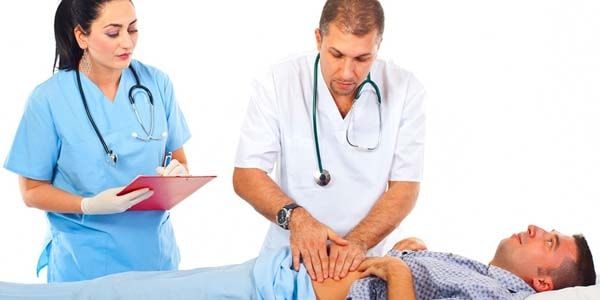
It is best not to treat advanced hemorrhoids at home. In some cases, hospitalization is indicated, but even without this, the progress and success of the chosen tactics should be assessed by the attending physician. Modern medicine denies the effectiveness of traditional recipes much less, so even a certified specialist can use several types of medicines. The best traditional medicine recipes are described in further information.
How to treat hemorrhoids with folk remedies:
- Crush several rowan berries, wrap in a cloth and apply to the affected area overnight.
- You can take herbal decoctions internally to relieve inflammation and help normalize digestion. The most commonly used are mullein, St. John's wort and chamomile. These herbs can also be used to prepare a warm compress that can be used daily to relieve soreness and bleeding of the nodes.
- Sitz baths are also good for relieving pain and inflammation. To do this, you can use chamomile, oak bark or yarrow decoction. They are brewed according to the standard scheme indicated on the package.
- Raw potatoes help a lot. It can be used as a compress, applying grated pulp to the sore spot. For internal hemorrhoids, a candle cut from a potato and placed at night will help better.
Such recipes will help relieve swelling, prevent inflammation, and even promote the outflow of blood from the affected nodes. With advanced forms, it is difficult to count on quick and problem-free healing, but in combination with official medications this can give a noticeable effect.
Pharmacy medications for hemorrhoids:
- When diagnosing thrombosis of hemorrhoids, suppositories with heparin or heparin ointment in the form of compresses are used.
- Pain relief occurs with the help of novocaine blockade and prescribed painkillers.
- Hemostatic agents are used intramuscularly or intravenously.
- To relieve swelling and inflammation, products such as “Procto-Glivenol”, “Relief”, “Anuzol”, “Bezornil” or “Anestezol” are used.
- To prevent the formation of blood clots, the drugs Hepatrombin G, Hepazolon or Nigepan are used.
Prognosis for recovery depends on the individual characteristics of the patient and the success of the chosen treatment tactics. You should be prepared for long-term treatment, strictly follow the doctor’s instructions and do not give up treatment after the first improvements. It is imperative to follow a diet and perform special exercises. Hemorrhoids are very difficult to overcome, because even long-term remission does not guarantee non-recurrence of the disease. In case of severe complications, one has to resort to surgical treatment methods, which are also varied.
Treating hemorrhoids at home
Anyone can detect hemorrhoids, but only a specialist - a coloproctologist - can make an accurate diagnosis. Hemorrhoids in the first or second stage can be successfully treated at home. Doctors recommend using topical medications in these cases. These can be ointments, suppositories, and various creams.
Before starting treatment with one of these drugs, you must read the instructions for use very carefully.
Particular attention should be paid to dosages and side effects of the drug.
Among the most popular and safest drugs for treating hemorrhoids at home are the following:
- Suppositories with propolis. These candles have the main active ingredient, the biologically active component propolis, and the filler is cocoa butter. Suppositories have a powerful bactericidal effect and have a wound-healing effect. It is recommended to use these candles once or twice a day;
- Posterizan, rectal suppositories. Designed to relieve inflammatory processes in the rectum. Increases immunity. Should be used twice a day, morning and evening;
- Candles with ichthyol. They cope well with inflammatory processes and have a bactericidal effect;
- . An excellent antiseptic, as well as a drug with a powerful wound-healing effect. Helps very well to combat microcracks;
- Fleming's ointment. The drug belongs to a number of homeopathic drugs. It has a mild analgesic, bactericidal and anti-inflammatory effect. Used for seven days, it is recommended to use one to three times a day;
- Levomikol. Ointment with anti-inflammatory effect. Apply once or twice a day directly to hemorrhoids;
- Bazornil. Complex action ointment, which is created on the basis of Chinese medicine recipes. Apply immediately after defecation, it is recommended to apply twice a day. In some cases, it is recommended to apply this ointment inside the rectum using a special applicator.
Classification of hemorrhoids
Proctologists distinguish 4 stages of hemorrhoids:
- Stage 1. Hemorrhoidal nodules protrude slightly from the lumen of the anus, no painful sensations are observed.
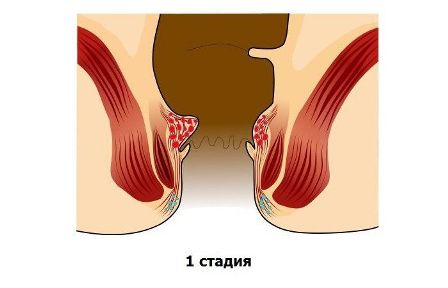
Sometimes minor bleeding is recorded. Anoscopic examination confirms the presence of nodules. The intestinal mucosa is inflamed, the capillaries are enlarged. The patient feels discomfort. Bleeding may occur during defecation.
- Stage 2. Sometimes inflamed nodes can spontaneously fall out of the anus.
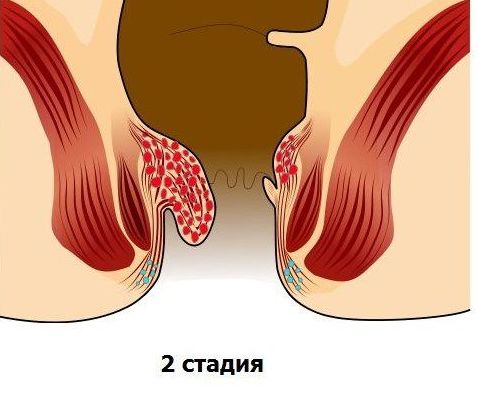
Most often this occurs during bowel movements. They also adjust spontaneously. The general feeling of discomfort is accompanied by frequent itching and discharge.
- Stage 3.
In the third stage, prolapse of inflamed nodes occurs both during the act of defecation and during increased intra-abdominal pressure or physical exertion. In this case, the reduction is carried out independently, manually. At first, the nodules fall out only when visiting the toilet, later they come out of the opening of the rectum with any strong body tension. To the listed symptoms are added pain and soiled underwear. - Stage 4. Dropped nodes cannot be put back in place. This stage is considered the most dangerous, since thrombosis can develop in the nodules. Later, anemia appears and, as a result, severe bleeding.
According to symptoms, the disease is divided into:
- bleeding hemorrhoids. A characteristic manifestation is bleeding from the rectal opening;
- illness with pain. It is characterized by attacks of pain during defecation;
- weeping hemorrhoids. With this type, pathological manifestations are recorded in the form of itching and mucus discharged from the anus;
- pathology during pregnancy. Separate group. Most often occurs during pregnancy and childbirth. Pregnancy itself is a catalyst for the disease. However, after childbirth, most often, the disease recedes on its own.
The clinical picture of the disease occurs in acute or chronic form.
The disease is a chronic process with periods of exacerbation and remission. Acute phases occur due to thrombosis of hemorrhoids, after which inflammatory processes begin in them.

In the acute phase of the disease, it is customary to distinguish three stages:
- Thrombosis occurs in the nodes without inflammation.
- Inflammatory processes begin in the affected nodes.
- Inflammation spreads from the node to nearby tissues.
Also, hemorrhoids in the acute phase can occur in the form of thrombosis, but without an inflammatory process in the node. In another case, an inflammatory process is connected to thrombosis. And in its most severe form, inflammation spreads to the subcutaneous tissue near the perianal area.
Treatment of stage 1 hemorrhoids at home
The first stage of the disease is mild, without pain, since the nodes have just begun to form, are of insignificant size, and do not cause excessive pain in a person during bowel movements. But a person is already able to feel symptoms of the presence of the disease, such as:
- discomfort during bowel movements;
- slight irritation in the anal area;
- bloating;
- feeling of incomplete evacuation;
- in some cases, insignificant bleeding.
As a rule, most people ignore the signs of the first stage without paying due attention to them. Sometimes the detection of hemorrhoids becomes the result of a person turning to a specialist for a completely different problem.
Stage 1 drug therapy
Treatment of the initial stage of hemorrhoids must be carried out without fail. Treatment at this stage may include the following:
- Fixing a sedentary life.
- Diet.
- Drug therapy.
- Prescription of pharmaceutical forms for sclerotherapy, as well as coagulation with infrared rays.

All these measures are aimed at improving digestion, evacuation of the intestinal tract, and preventing difficulties with defecation. Minimally invasive methods help eliminate the nutrition of the nodes, which makes it possible for them to eliminate themselves.
Due to the preventive processes used at the first stage of the disease (diet, light physical activity, gymnastics), in most cases it is possible to prevent the disease from moving to the next stage
It is important to beware of excessive physical exertion, especially those in which the key load is placed on the pelvic organs. Walking activities will be very favorable - for example, jogging
Mixed medicinal treatment includes the use of tablets, creams, rectal suppositories:
- Tablets Detralex, Posterizan and Proctosedyl help to increase the tone of venous vessels and normalize blood circulation in the pelvis. The period of therapy with these drugs consists of using the drugs for at least 3 months.
- Suppositories Prostopin, Gepatrombin G, Methyluracil, Relief Ultra help relieve irritation, burning, discomfort, and in addition, stop bleeding. These dosage forms have wound-healing, anti-inflammatory, and analgesic effects.
- To eliminate pain, Anestezin and Lidocaine can be prescribed.
- For bloody discharge, use special sponges or suppositories with adrenaline.
The method of therapy should be selected individually, based on the diagnosis. Classic drug treatment is often diluted with alternative medicine. But before using them, you need to consult a specialist.
Therapy using folk remedies
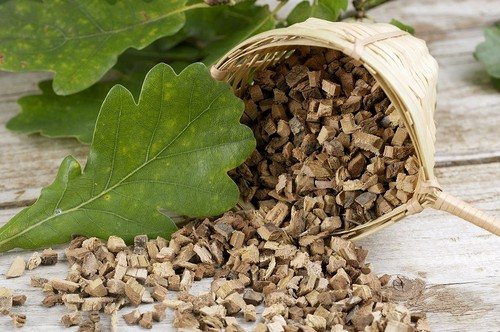
If the use of such products is not contraindicated, then it is possible to use decoctions, candles, and baths at home.
A decoction of St. John's wort has an antimicrobial, astringent, and anti-inflammatory effect.
To prepare the decoction you will need 1.5 tablespoons of crushed herb leaves and 200 ml of boiling water. The entire solution should be boiled over low heat for approximately 10 minutes, then allowed to brew, filtered and consumed before meals, 70 ml three times a day.
Knotweed herb, chamomile, and sage have a similar result.
Those who are ill will benefit from taking baths with birch infusion. For this session you will need birch leaves. You need to take 10 handfuls of leaves per 5 liters of boiling water, then you need to let the liquid brew for about 15 minutes, cover with a lid, let cool and pour into the prepared bath. The duration of the session should last 15 minutes, apply every other day.
A smoke bath with the addition of garlic or onions will help remove unpleasant signs of the disease. The result comes immediately. You need to take a can and place a brick on the bottom, which has been heated in advance. You need to put chopped garlic or onion on it. After smoke appears from the can, immediately sit on it. You will get a steam bath.
The second stage of development of hemorrhoidal disease
The affected nodules begin to grow strongly. The patient experiences a feeling of the presence of a foreign body in the anus. The itching also begins to become more intense.
Added to the picture of the disease are bleeding that occurs during bowel movements. Blood marks remain on toilet paper, the toilet, as well as personal underwear and bed linen. Any straining or physical strain, including coughing, can lead to bleeding. In this case, the patient does not experience pain.
For patients with hemorrhoids in the first or second stage, minimally invasive treatment methods can be prescribed:
- ligation using latex rings;
- sclerotherapy;
- photocoagulation method;
- cryotherapy.
Initial stage of hemorrhoids treatment and prevention
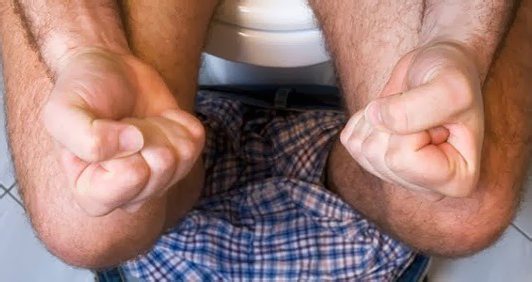
In the absence of effective treatment, the initial stage of hemorrhoids usually progresses to more serious stages of the disease. That is why early diagnosis and prevention of this pathological dilation of the vessels of the venous plexus in the anal area is very important. Since the symptoms of the disease may not be pronounced, at the first suspicion of the development of hemorrhoids you should undergo an examination.
Table: Recommended treatment for hemorrhoids at each stage
| Hemorrhoid stage | Treatment |
| I | Creams, gels, rectal suppositories, drugs, sclerotherapy, photocoagulation, Bicap diathermocoagulation |
| II | Hardening of nodes, medications, photocoagulation, latex ring ligation, thermal probe, Ultroid current |
| III | Drug therapy, latex ring ligation, Ultroid current, hemorrhoidectomy |
| IV | Hemorrhoidectomy, phlebotropic drugs |
How to treat the initial stage with folk remedies
Traditional medicine over the centuries has created many recipes that are intended to treat hemorrhoids at its different stages. Mainly in the arsenal of folk healers are decoctions, tinctures, microenemas and lotions, although there are also ointments and unique suppositories. Very often, doctors recommend combining conservative medications.
Among the traditional medicine recipes, the following should be highlighted:
- Infusion of mountainweed. Pour two cups of boiling water over a spoonful of dried herbs. Let it brew and strain. It is recommended to drink a third of a glass three times a day, and it is better to do this before meals;
- Raspberry leaf infusion. Pour two tablespoons of dry crushed raspberry leaves into a glass of boiling water. Let it brew, then strain. Drink one tablespoon of infusion in the morning and evening;
- Beet juice. Wash red beets and squeeze out the juice. Take 50 milliliters of beet juice three to four times a day. The juice has a hemostatic effect during exacerbation of hemorrhoids;
- Infusion of rose hips. Due to the increased content of natural vitamins in rose hips, a decoction of them has a vascular strengthening effect. To prepare the infusion, take a tablespoon of fruit and pour half a liter of boiling water. Let it brew, you can add a little honey to the infusion. The resulting volume is divided into two parts and taken in the morning and evening before meals.

